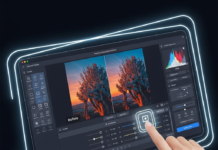Last Updated on February 9, 2025 by Bisma Sehar
The use of data analysis solution in health care varies widely and can be divided into two main categories: Predictive and diagnostic. Predictive analytics use forecasting and modeling to predict adverse events, while diagnostic analytics analyzes historical data. This article will focus on the latter type of analytical software in healthcare.
Table of Contents
Predictive analytics
Predictive analytics can help healthcare organizations better understand their patients by using data science to predict health-related events. For example, predictive analytics can identify patients that are likely to miss appointments and allocate resources accordingly. In addition, they can learn about a patient’s risk of seasonal sickness and place doctors’ offices closer to their homes.
The benefits of predictive analytics are numerous. These tools can help prevent readmission and monitor a patient’s risk of developing certain diseases. They can also be used to detect fraud and prevent criminal activity. Security and cybersecurity are major concerns today. Predictive analytics can help healthcare providers make more informed decisions regarding health care and lower costs.
Diagnostic analytics
If you’re in the health care industry, you’re probably familiar with diagnostic analytics software. Diagnostic analytics examines historical and current data to find correlations and patterns. Then, with a suitable dataset, diagnostic analytics can be used to develop predictive models.
In business, diagnostic analytics helps businesses understand trends and identify the causes. The results of diagnostic analytics can help companies improve their performance by better understanding data, expenses, and customer behavior. The data gathered through this process helps them formulate better strategies and implement changes in the business to meet customer needs. But why is diagnostic analytics so crucial in the healthcare industry? Let’s take the example of a fashion brand. It might experience an unexpected surge in profits. The software will identify the reasons behind the spike, allowing the company to fine-tune its strategy.
Prescriptive analytics
Prescriptive analytics is the future of big data in the healthcare industry. The Internet of Things is revolutionizing the way we collect and analyze health information, while machine learning advances algorithms that calculate the behavior of nearly anything. Using these technologies in the healthcare industry allows decision-makers to optimize business outcomes, reduce costs, and improve care.
Using data from hospitals, prescriptive analytics can improve patient outcomes. By analyzing costs and outcomes, it is possible to forecast which patients are most likely to be readmitted in the next month. Prescriptive analytics can also determine the optimal course of treatment and enable hospital staff to take additional steps to decrease the risk of readmission. Once a predictive analytics tool is developed, it can be used in the healthcare industry to improve care delivery and reduce costs.
Data assurance
If you’re using analytical software in the healthcare sector, you must meet specific requirements. These include storing structured data in a central location and ensuring that data is in a uniform format. Choosing an analytics software with these features ensures data will be secure and compliant with HIPAA guidelines.
Healthcare data is complex and requires strong security measures. It may include electronic health records, real-time vital signs, and telemedicine. All of this data must be stored and analyzed correctly to ensure the quality of care. Furthermore, healthcare organizations are legally obligated to store and share data with government regulations. Therefore, data security and data assurance must be paramount to ensure that healthcare professionals can access the results of their work.
Costs
For years, healthcare IT vendors have complained about the rising costs of big data analytics. But these complaints have not diminished, as new applications are constantly being developed. Today, AI-powered systems can help clinicians make more informed decisions. The cost of using analytic software depends on its capabilities and your healthcare IT budget for starters, the cost of analytics relies on the data you want to analyze.
Historically, most healthcare data is static, consisting of paper files, x-ray films, and patient scripts. However, with real-time monitoring, mounting data is now more dynamic. Specific medical information includes multiple daily diabetic glucose readings, blood pressure readings, and EKGs. The ability to analyze data in real-time can be the difference between life and death. Analytics software can even prevent these equipment problems before they happen.
Benefits
Healthcare organizations can significantly benefit from analytical software and massive data. This type of software allows healthcare organizations to identify patient cohorts at risk of specific ailments, which can then be used to take proactive measures. The use of big data analytics in healthcare can also help healthcare specialists understand the causes of various ailments and identify potential cures or treatments. The use of big data analytics in healthcare can also help physicians allocate more care units or identify new therapies and drugs that patients need.
One example is North York General Hospital in Toronto, a 450-bed community teaching hospital. This organization uses real-time analytics to create reports based on data collected from hospital patients. Such reports offer a variety of perspectives, including clinical, administrative, and financial, which can be very useful for decision-making. In addition, IBM recently reported on a large, unnamed healthcare provider that used analytics software to identify opportunities for organizational growth. The analytics software also enables healthcare organizations to remember high-value service lines and improve network utilization and planning. Furthermore, healthcare organizations can use this software to increase patient engagement initiatives.
Read More: What’s the Future Of Big Data With Augmented Analytics?
















